Welcome to May 2018 edition of Curious Tea’s subscriptions! Let’s look at the four exciting new teas we’re sharing with our subscribers this month.
This month we feature two teas that come from the same source in northern Thailand – green and black versions of the same tea. The first one is a light and refreshing green tea, the Angkhang Royal Project Green. And the second one is a smooth and complex black tea, the Angkhang Royal Project Black. The other light tea to feature in our boxes this month is a complex, unusual and very rare oolong from Japan, Gokase Minamisayaka Oolong that has a unique floral character. Finally the other dark tea that we selected is the stunning Dian Hong Jin Zhen Golden Needle, a Yunnan Red tea that is made exclusively of large buds, resulting in a sweet character with notes of honey and cocoa.
- Light: Angkhang Royal Project Green and Gokase Minamisayaka Oolong;
- Dark: Dian Hong Jin Zhen Golden Needle and Angkhang Royal Project Black;
- Mixed: Angkhang Royal Project Green and Dian Hong Jin Zhen Golden Needle.
Our Discovery subscription boxes contain 10g taster pouches of all of the above mentioned teas. If you are a subscriber you will benefit from a 10% discount on all teas from our tea shop!
Let’s get into further detail on the products featured in our May tea subscription boxes.
Angkhang Royal Project Green

This month we feature two teas from Angkhang in northern Thailand that are made from the same plants but are processed differently. These teas are green and black versions made from the same Jin Xuan cultivar. The only difference between them lies in the processing. This first tea here is an unoxidised light green tea, while the second tea below is near fully oxidised, resulting in a smooth black tea
Angkhang Royal Project Green is a fully organic green tea from the Royal Project Foundation based at Doi Angkhang in northern Thailand. Made from a Taiwanese Jin Xuan cultivar, it exhibits a refreshing character that is vegetal and smooth with green fruity notes. This tea is the green counterpart to our Angkhang Royal Project Black tea below. Grown at an altitude of around 1,300m, this tea is from summer 2017’s harvest.
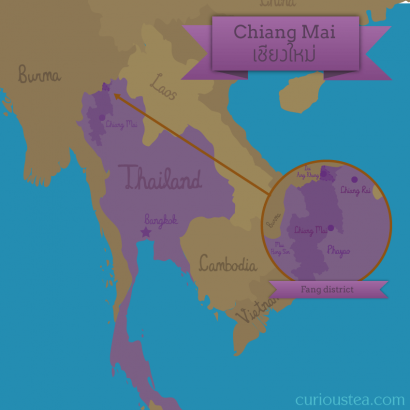
This tea is grown by the Royal Project Foundation, which is a Thai non-for-profit organisation based in northern Thailand. The Foundation was founded by King Bhumibol Adulyadej in 1969. The Foundation was created in order to better the lives of hill tribes by providing and supporting sustainable agriculture. The main emphasis historically has been moving the hill tribes from farming opium to cultivating sustainable crops. Presently Angkhang is one of the three Royal Agriculture Stations that specialise in researching high mountain agriculture, training of local hill tribe people and furthering career development of local hill tribe farmers.
This Angkhang Royal Project Green comes in mixed size green leaves that are rolled and twisted. The liquor produced is light green in colour with a sweet vegetal aroma. This tea is instantly approachable, having a light and refreshing smooth flavour. It has a mouth-watering quality with no astringency or dryness to it. The flavours are lightly vegetal, with slight buttery and citrus notes. There are also flavours of green fruits and hay present. Being very drinkable it makes an excellent everyday green tea.
We suggest brewing at 80°C for 2-3 minutes according to your taste. It can be brewed around 2+ times depending on your taste preferences.
You can also buy Angkhang Royal Project Green tea in our online shop.
Angkhang Royal Project Black
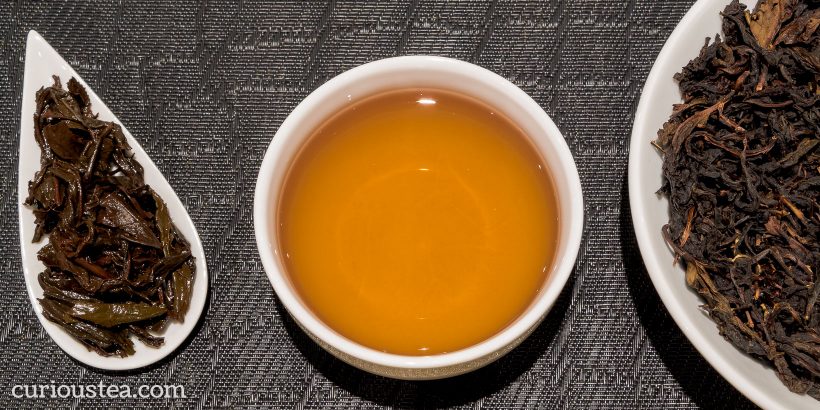
Angkhang Royal Project Black is a fully organic black tea from the Royal Project Foundation based at Doi Angkhang in northern Thailand. Made from a Taiwanese Jin Xuan cultivar, it exhibits a complex character that is fruity and spicy with peppery and caramel notes. This tea is the black counterpart to our Angkhang Royal Project Green tea above. Grown at an altitude of around 1,300m, this tea is from summer 2017 harvest.
This tea comes from around Doi Angkhang that is located right next to the border with Burma. The tea is grown in a favourable climate at an altitude of between 1,200m and 1,500m. You can see a Google Maps panoramic image from the plantation below:
Angkhang Royal Project Black is a black tea that is produced from a Taiwanese Jin Xuan cultivar that is most commonly known for being the leaf of choice for Milk Oolong. When this area of Thailand went from growing opium poppies to sustainable tea growing, many tea cultivars were imported from Taiwan in order to quickly establish a booming tea industry. Jin Xuan seems to be particularly suited to the mountainous climate of northern Thailand. While some teas here are processed as classic oolongs, many growers try to experiment with production methods to produce something a bit more unusual – just like this Angkhang Royal Project Black.
This Angkhang Royal Project Black comes in mixed size dark leaves that are twisted and wiry. The liquor produced is amber in colour with a fruity aroma. This tea has a quality that is quite reminiscent of multi-layered Taiwanese black teas, although the flavours are not as strong or pronounced. The mineral and stony character of this tea has spicy and peppery notes. There are further notes of burnt caramel, molasses and golden syrup. There is no harshness, bitterness or astringency to this tea, resulting in a very clean flavour. There are some tangy and fruity top notes that remind of cooked fruits and other teas strong on raisin notes, such as our GABA Oolong. Overall a rather complex yet light tea that has a satisfying complexity to it.
We suggest brewing at 90°C for 3-4 minutes according to your taste. It can be brewed around 2+ times depending on your taste preferences.
You can buy Angkhang Royal Project Black tea in our online shop.
Gokase Minamisayaka Oolong
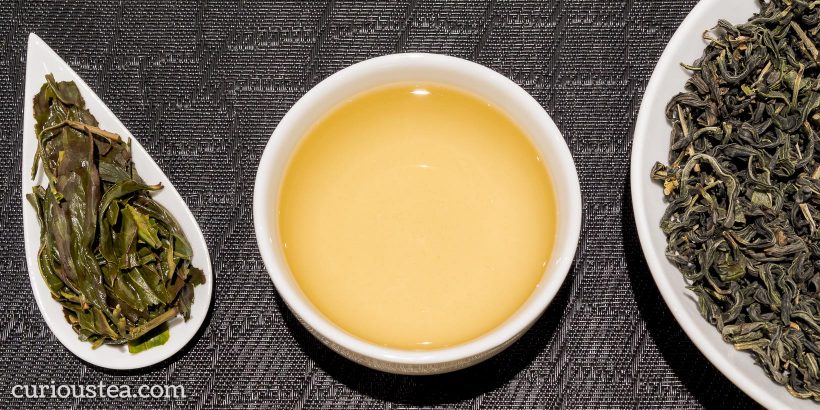
Gokase Minamisayaka Oolong (五ヶ瀬町烏龍茶) is a very rare and unusual oolong that comes from Miyazaki Prefecture of Japan. Processed similarly to a light floral Bao Zhong oolong, it has a complex profile with predominantly floral flavours that are unusual in Japanese tea. Grown at a fully organic plantation at an altitude of around 600m, it is a spring May 2017 harvest.
Japan is well-known for production of various green teas. Most farmers prefer to grow and process green teas as there is strong demand for classic Japanese-grown green teas. With so little other tea types being produced, it makes this Gokase Minamisayaka Oolong a rather rare find. This Japanese oolong is grown at a fully organic tea farm that has full JAS certification. This means that it is grown without any use of artificial fertilisers and pesticides, translating to a very clean and fresh taste in the finished product.
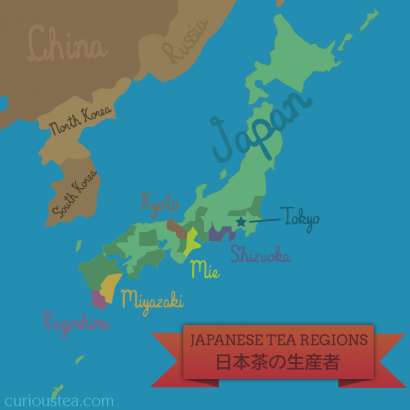
As the Gokase Minamisayaka Oolong name of this tea suggests, it is an oolong from Gokase Town (五ヶ瀬町), located in the hilly area of Miyazaki Prefecture. The Minamisayaka part of the name refers to the cultivar that is used to make this tea. The no. 42 Minamisayaka (みなみさやか / 南爽) is a Japanese cultivar that was introduced in the early 1990’s in Miyazaki Prefecture. It is most commonly used to make green tea. However as it is known for a milky and floral taste, the tea master in this case decided to process it into a lightly oxidised oolong, which, in our opinion, works wonders.
This oolong is a Bao Zhong style of oolong and it makes an intriguing comparison to our Wen Shan Bao Zhong from Taiwan. It is interesting to note that Taiwanese oolong teas are gaining in popularity in Japan. So while this style of Japanese tea is still relatively rare, it is possible that we will be seeing more Japanese lightly oxidised oolong teas in future due to this demand in Japan. While it is possible to argue that the character of this tea is too similar to lightly oxidised Taiwanese oolongs and that this kind of Japanese oolong is not distinctive enough, it certainly is not ‘just another light oolong’. It does display quite a unique and unusual character and, while perhaps familiar in taste, it is more challenging and intriguing in flavour when compared to other similar oolongs.
The leaves of this Gokase Minamisayaka Oolong are rather neat and have a dark green colour with a blue hue. Looking at these leaves you can definitely see why oolong is dubbed ‘blue’ tea. The liquor produced is a golden green colour and has a light floral aroma. The taste is very smooth, with vegetal and tart notes. There are some tannins present, which you would not normally find in a Taiwanese tea of this style. The taste is predominantly floral with a complex aftertaste that becomes tangy, fruity with pronounced citrus notes. Most of this aftertaste lingers at the top of the palate, making the flavour long lasting, complex yet not overwhelming. When compared to Taiwanese Bao Zhong style teas, it perhaps does not taste as ‘clean’ and ‘fresh’ and is not as strong on the floral flavours. However this is greatly compensated by the complexity of flavours and the drinker is rewarded with an unusual and intriguing Japanese oolong that represents a different take on a lightly oxidised oolong.
It is best brewed at 90°C for 2-3 minutes, with multiple infusions. As this tea can be slightly capricious, and you are finding the taste a little astringent, you can reduce the water temperature and/or brewing time for the first infusion, gradually increasing it for subsequent infusions.
You can also buy Gokase Minamisayaka Oolong tea in our online shop.
Dian Hong Jin Zhen Golden Needle
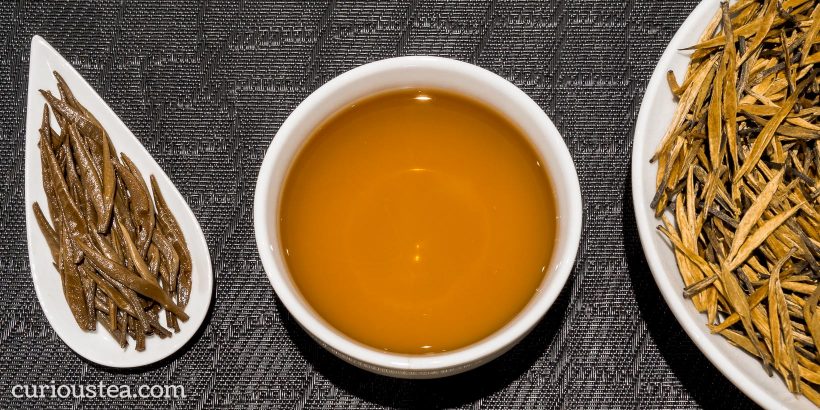
Dian Hong Jin Zhen Golden Needle (滇紅金針) is a brilliantly characterful high grade black tea from Feng Qing County of Lincang Prefecture, Yunnan Province. It takes its name from the appearance of the leaves that consist of only large buds, resembling golden needles. It has a classic Dian Hong, or Yunnan Red, character that is typically sweet, malty and chocolaty. This particular batch is from the Autumn 2017 harvest.
Feng Qing County of Lincang Prefecture is a well-known area for the production of tea. Traditionally and historically most production consisted of pu-erh teas. However, this area is also where Yunnan black tea started being produced, around 1938. Starting in Feng Qing County, black tea production quickly spread throughout the whole of Yunnan Province due to the fast rising popularity of Yunnan Red teas. This was largely due to Dian Hong’s characteristic deep and satisfying flavours that are sweet, malty, smooth, chocolaty and non-astringent.
While many Dian Hong black teas are produced from popular Camellia sinensis varietals, this Dian Hong Jin Zhen Golden Needle is unique as it is produced from an unusual hybrid referred to as Feng Qing #17. This hybrid was introduced only in the past 20 years or so and it comes from crossing Camellia sinensis var. assamica with a wild strain of local Camellia sinensis var. taliensis. Both of these varietals are native to Yunnan Province and are both either grown wild or can be cultivated. This hybrid has been specifically selected to achieve the best characters from both of the varietals. It combines the flavours of taliensis, which tends to be heavier on the cocoa flavours with those of assamica, which tends to be maltier and sometimes heavier on the tannins. The resulting tea is best of both worlds, featuring a sweet mineral and slightly malty profile with complex notes of dark chocolate.
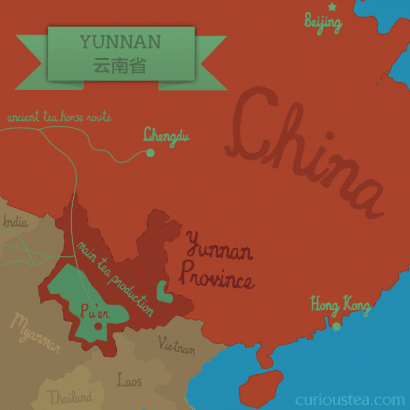
It is further possible to appreciate the nuances of this tea when you compare it to those made purely from the assamica and taliensis varietals. For a good comparison, you may want to choose our Dian Hong Da Li Cha that utilises only plants of the taliensis type and our Dian Hong Jin Ya Golden Buds that utilises only assamica plants. When comparing the three side by side, it is possible to appreciate the unique flavours that are typical of each varietal.
This Dian Hong Jin Zhen Golden Needle black tea has dry golden leaves that consist of pure buds. Unlike some other varietals, it is possible to see that this tea has very large leaves straight away – by the size of the long golden needles. These golden needles produce a very smooth liquor that has a slight malty aroma. The taste is soothing and satisfying. It has pronounced malty, mineral and sweet flavours with distinct notes of acacia honey and dark cocoa. It has no astringency or bitterness, making it very drinkable. The sweet aftertaste slowly gives way to some tartness reminiscent of good quality high percentage dark chocolate. Overall the flavours are complex and full while being very clean.
It is best brewed at 90°C for 3-4 minutes according to your taste. It also will withstand multiple infusions extremely well.
You can also buy Dian Hong Jin Zhen Golden Needle black tea in our online shop.
We really do hope that you enjoy the tea selection for May and are looking forward to the next instalment in June!
If reading this has made you curious about our teas, but you don’t yet subscribe to a monthly tea selection, you can sign up for our tea boxes in just a few clicks. We ship worldwide from London, UK.
We always love to hear from you, so if you have any questions, suggestions or just want to chat about tea, email us at contact@curioustea.com, via our Facebook page or via Twitter.
You can also follow us on Instagram for pretty tea photos.
Happy tea discoveries!


Do you mean that tea can be bought around here? https://catmotors.net/routes/doi-ang-khang/
I was there yesterday, but I did not see Tea being sold there. Moreover, on the way I drove into 4 Chinese villages, and nowhere did I find a tea shop! I even began to doubt, are these villages really Chinese? Where exactly is the tea shop?
There isn’t as much tea around Doi Ang Khang compared to Doi Mae Salong. If you are looking for a lot of tea shops, I suggest visiting DMS. It also definitely has a more Chinese feel. Otherwise if you go to the Royal Project Foundation in Doi Ang Khang you can buy their tea and other produce in their shop there.